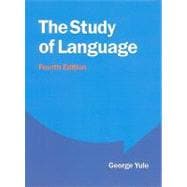

The first includes theories of definite descriptions and proper names. Clearly argued, this concise introduction will be welcomed by students and researchers in a variety of disciplines involved in the study of discourse, including linguistics, linguistic anthropology and the sociology of language.read more read lessĪbstract: The analysis of referring expressions can be divided into two branches for our purposes. Blommaert focuses on how language can offer a crucial understanding of wider aspects of power relations, arguing that critical discourse analysis should specifically be an analysis of the 'effects' of power, what power does to people, groups and societies, and how this impact comes about. It covers topics such as text and context, language and inequality, choice and determination, history and process, ideology and identity. Organised along thematic lines, the book begins with an outline of the basic principles, moving on to examine the methods and theory of CDA (critical discourse analysis). At the opposite extreme, we can point to linguistic messages which are not presented in sentences and consequently can't be discussed in terms of syntactic well-formedness, but which are readily interpreted.read more read lessĪbstract: This engaging 2005 introduction offers a critical approach to discourse, written by an expert uniquely placed to cover the subject for a variety of disciplines.


(Tom Wolfe, The Right Stuff, Bantam Books, 1981) The novelist is, of course, leading his reader to read on and find out just what the first sentence, though literally complete, has only partially described. (1) Within five minutes, or ten minutes, no more than that, three of the others had called her on the telephone to ask her if she had heard that something had happened out there. Extract (1), the first sentence of a novel, may provide an illustration of this point. We can recognise, for example, when a writer has produced a perfectly grammatical sentence from which we can derive a literal interpretation, but which we would not claim to have understood, simply because we need more information. We certainly rely on the syntactic structure and lexical items used in a linguistic message to arrive at an interpretation, but it is a mistake to think that we operate only with this literal input to our understanding. Abstract: Coherence in discourse One of the pervasive illusions which persists in the analysis of language is that we understand the meaning of a linguistic message solely on the basis of the words and structure of the sentence(s) used to convey that message.


 0 kommentar(er)
0 kommentar(er)
